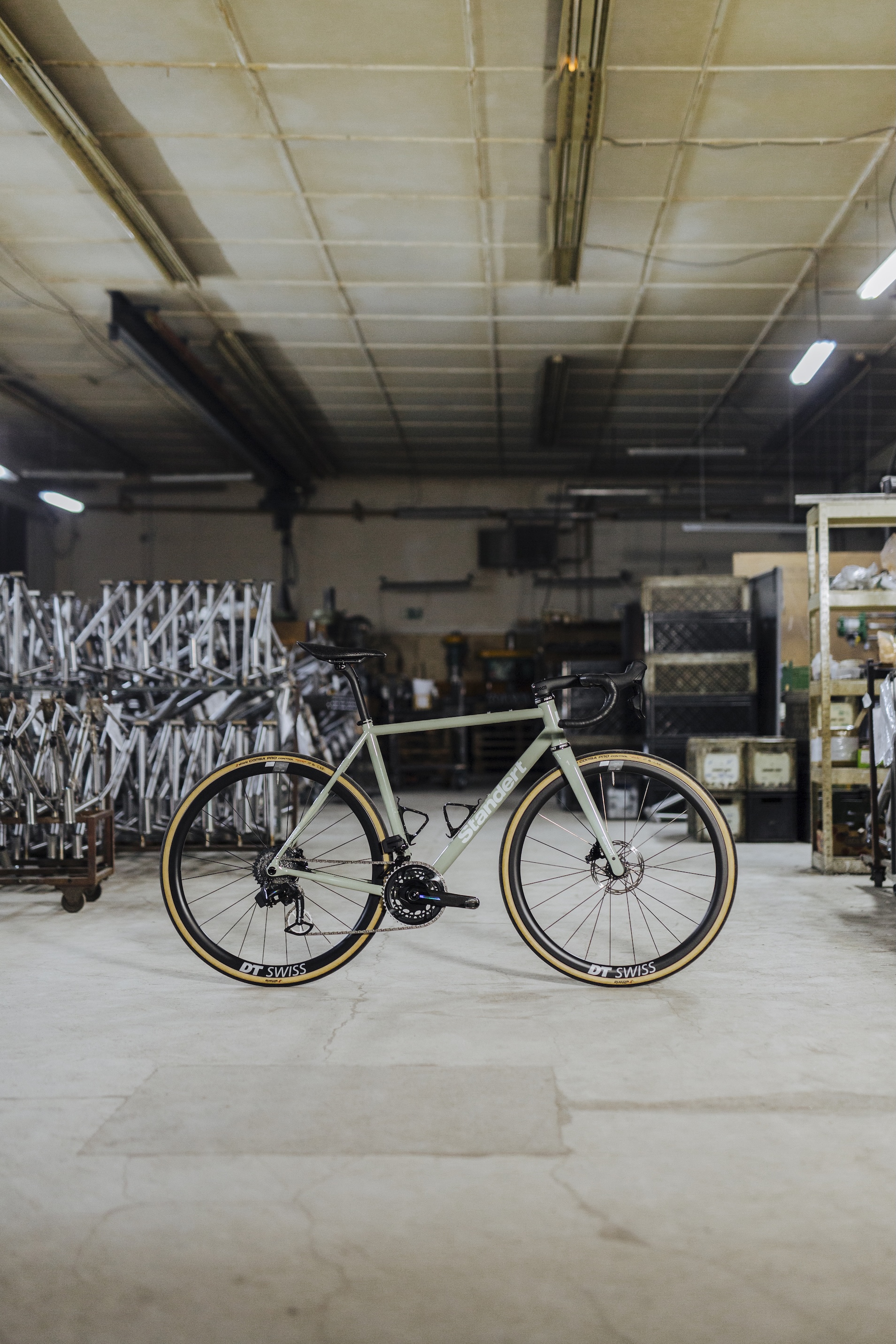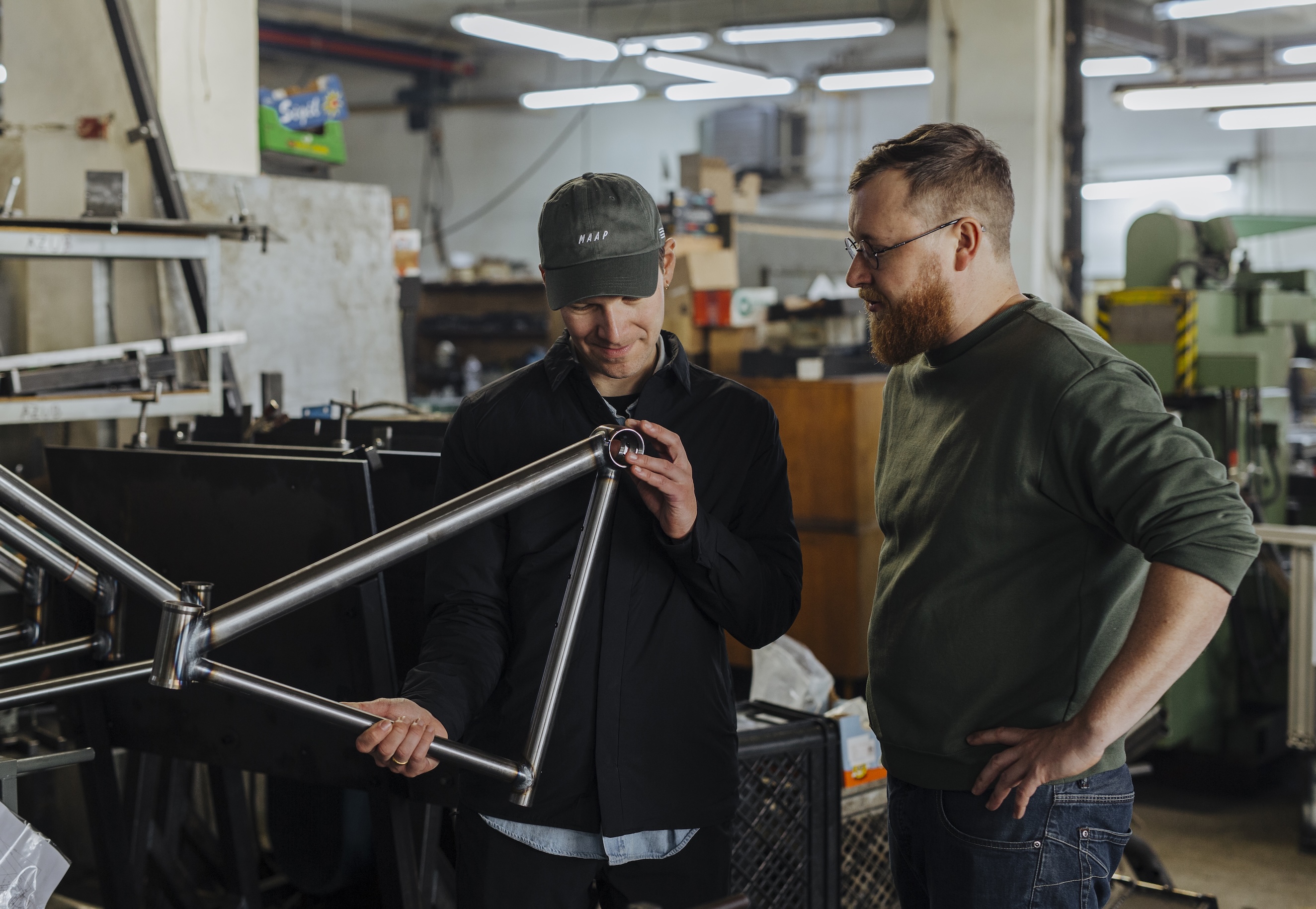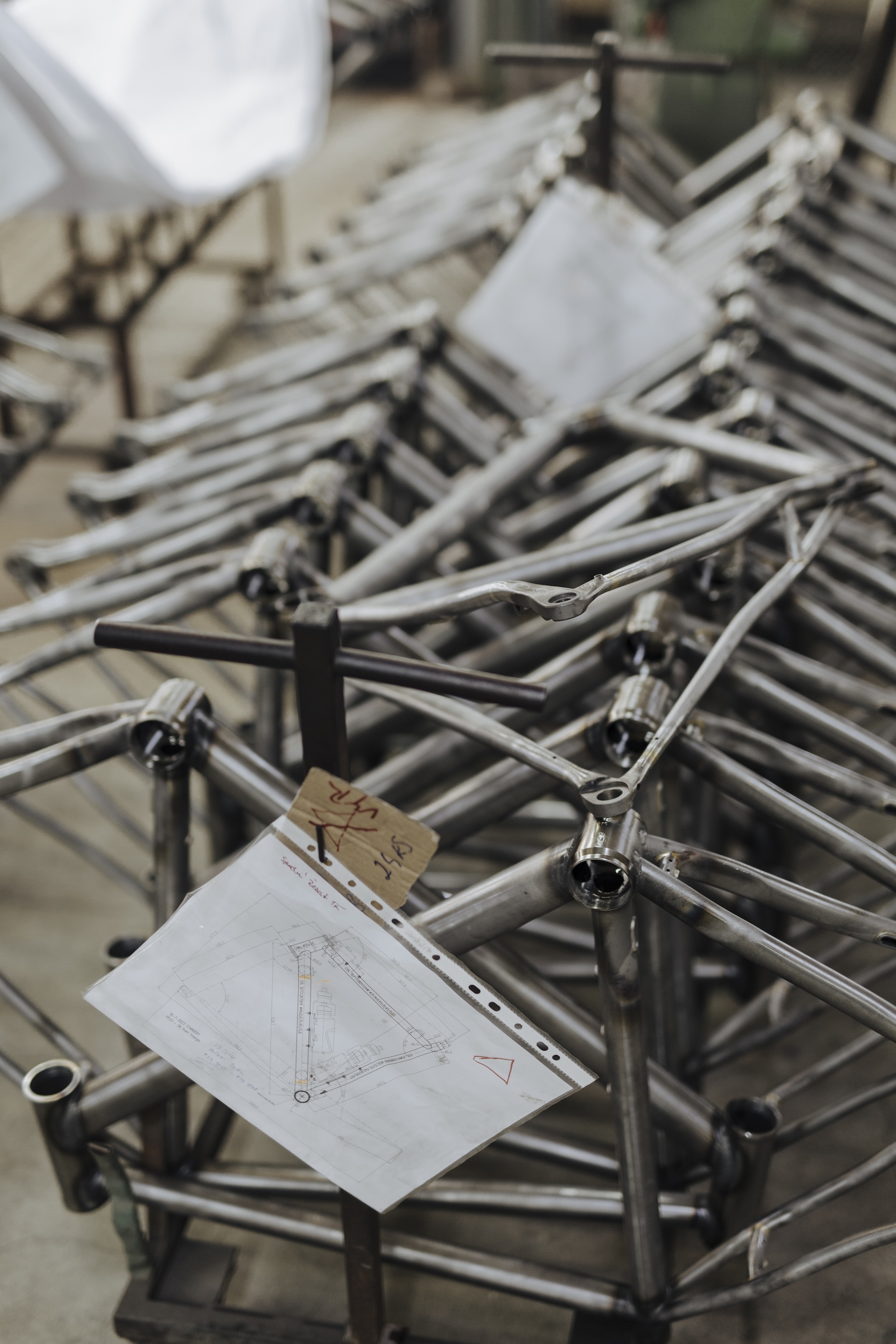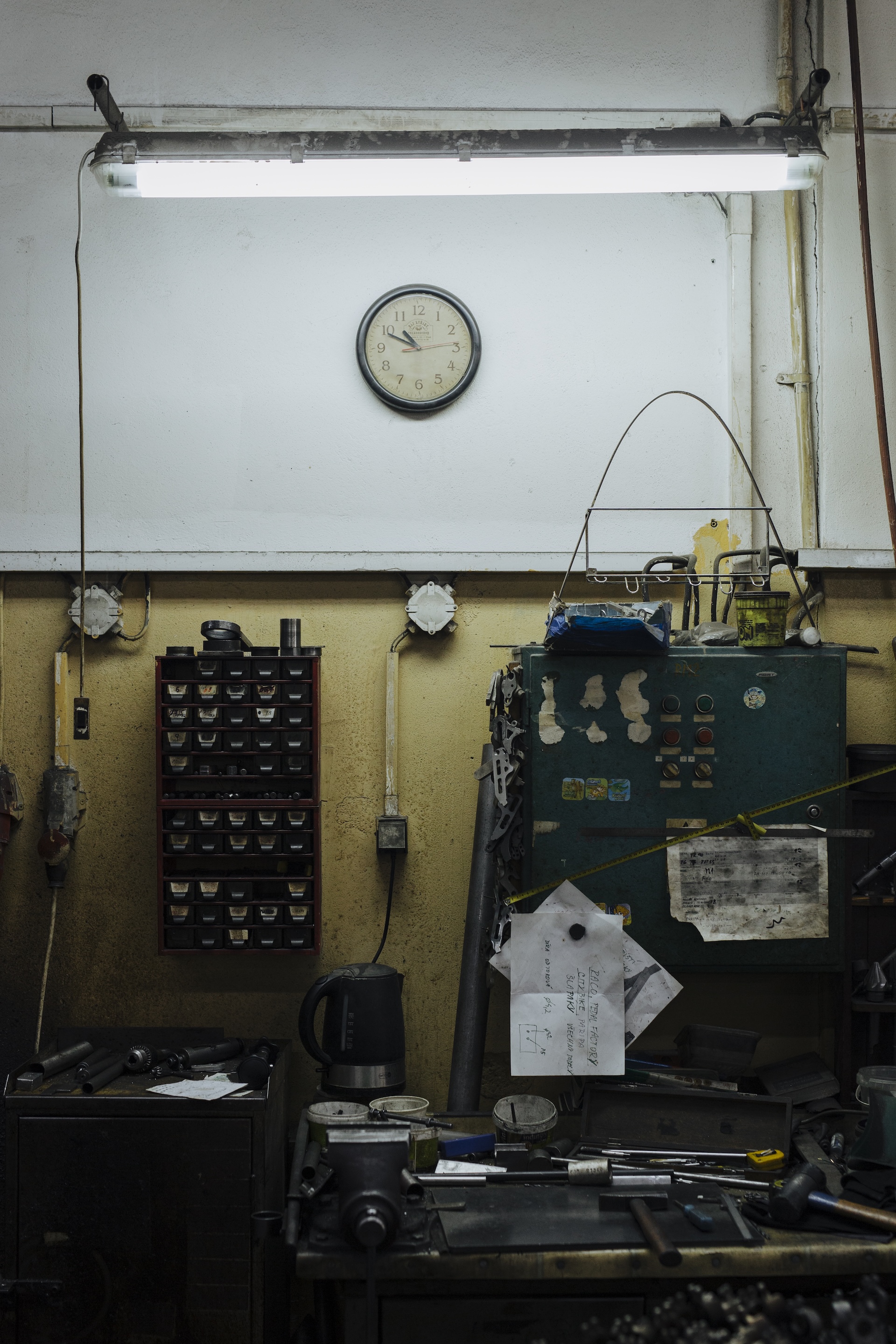
Everything went black. Seconds ago, a rogue pedestrian had forced me into a sudden evasive manoeuvre on my bike. In doing so, I’d been struck head-on by an oncoming car.
I instinctively stood up as the scene faded back into focus. To my left, the car, undamaged apart from a shattered windscreen. To my right, my state-of-the-art race bike, my pride and joy, snapped in two.
Steel versus carbon fibre. Steel won.
You don’t have to be Mark Cavendish to know that in professional cycling, this battle has a different outcome. Carbon is king. It’s lighter, stiffer, faster, winning every Grand Tour for at least thirty years. Enthusiasts follow suit, snapping up high-tech carbon fiber machines.
Yet steel’s story isn’t over. This is the material cycling was built on, and a countercultural movement is keeping it alive, relevant even, in a world dominated by disposable plastic bikes.
Olympian and ex-professional cyclist Dan Craven is one of the modern frame builders championing steel. In Namibia, on the edge of the desert, he and his growing team craft stunning steel bicycles under the name Onguza.

"We are in an extremely harsh environment, far from everything,” Dan tells me from his workshop in Omaruru. “If you want to ride across the hardest terrain, do you want a bike made just anywhere, or one built for these conditions?”
From their workshop, you can cycle to where wild elephants roam free. Here, a broken bike isn’t an inconvenience, it’s a real problem.
Dan is determined to change perceptions of steel. While the Tour de France hasn’t been won on a steel bike since 1994, the material is still evolving outside professional road racing. The rise of gravel cycling, a blend of road and mountain biking, has played a role in its resurgence. Unlike road racing, where weight and stiffness are paramount, gravel riding values durability and comfort. Steel excels at both.
“Steel is still competitive. And aesthetically, it has a timeless appeal, like a classic Land Rover Defender.”
“An Onguza bike took third at The Traka, Europe’s biggest gravel race, outrunning a two-time Cape Epic champion,” Dan says. “Steel is still competitive. And aesthetically, it has a timeless appeal, like a classic Land Rover Defender.”
But for Dan, Onguza is about more than just beautiful, race-ready bikes. It’s about putting Namibian craftsmanship on the global stage.
“Namibia’s artisans are making five-quid tourist trinkets. Why not five-grand bikes? And that’s another great thing about steel. Yes, you need engineering basics, but it’s not rocket science. If you’re good with your hands, you can learn to do it.”
Five thousand miles north in Prague, Czech Republic, Repete is reshaping steel’s image. The brand’s R3 road bike barely looks like metal at all, its sleek, weld-free lines feel futuristic.
“We focus on high-performance steel bikes,” says co-founder Robin Fišer. “From the beginning, our goal was modern steel.”

High performance is an understatement. Repete recently built custom bikes for the Race Across America, a 3,000-mile ultra-endurance epic.
“Two guys, Martin and Tomáš, wanted to ride it on steel bikes for comfort and durability. So we made them two special models.”
It had been a decade since anyone last completed the race on steel. In ultra-distance events, aerodynamics and weight matter less. Comfort makes the real difference.
By blending classic materials with cutting-edge design, Repete reminds riders they don’t need to upgrade their bike every two years.
“You don’t need to replace everything all the time,” says Robin. “Maybe it’s even nice to have scratches from when you went to Grossglockner. Your bike tells a story. Steel lasts, and that makes it perfect.”
In Berlin, ‘Standert’ is a slang term roughly translating to “hell yeah.” It’s also the name Max and Anna von Senger gave their Mitte bike shop 13 years ago.
“I loved the skate-shop culture growing up,” Max tells me from Standert’s Kreuzberg HQ. “You’d go, hang out, watch crazy skate videos, then get hyped to skate. I wanted to bring that to Berlin’s cycling scene.”
Standert made its name with ‘Any Given Wednesday’ rides, underground races where cyclists tore through the city, dodging traffic at breakneck speed. Helmets were optional.

“When you take the train in Berlin, you have to stamp your ticket,” Max reminisces. “Every Wednesday, we’d meet up, pick a random station. Whoever got back with a stamped ticket first won. Looking back, it was insane but it was such a great vibe.”
These grassroots rides evolved into something bigger. Riders wanted performance road bikes with the same spirit. So Standert started making them.
Fast-forward to today, and Standert is a major force in contemporary steel bikes. That trendy cycling influencer you follow? Chances are, they’re riding one. The secret to the brand’s success: punchy branding, a strong visual identity, and a design-driven approach to paintwork.
“There’s no deliberate recipe,” Max says. “It’s the creative taste of the people here. Most of what we’ve done, photos, videos, has been in-house because we always operated with small budgets. Having that creative power internally became part of our DNA.”
Standert helped make steel bikes cool again, and the resurgence isn’t slowing down. Steel may not win the Tour de France anymore, but that’s not the point. For a new generation of riders, it offers something carbon never will, longevity, character, and a connection to the ride that doesn’t fade with the next product cycle.
“A steel bike is like your dad’s vinyl hi-fi tower compared to a JBL Bluetooth box,” Max says. “It has a more sophisticated feel. I think we’ll see an even bigger resurgence in the future. Performance is evolving, and recyclability is becoming more important to consumers.
“Yes, steel will always be the heavier option. But for the average rider, what’s more important, having a fun, repairable bike or saving 300 grams?”


